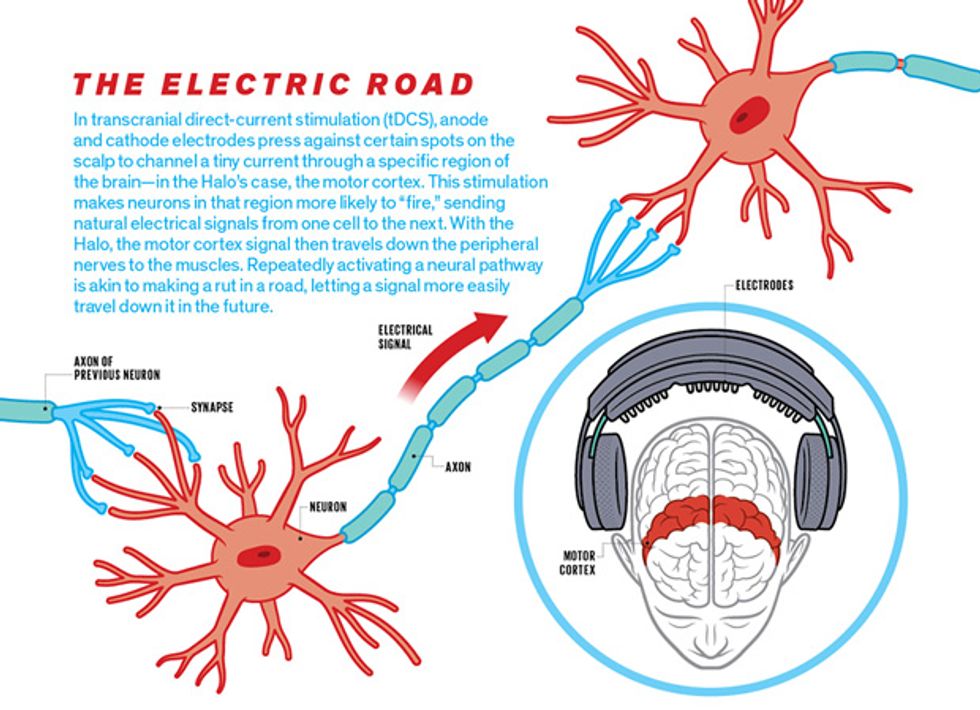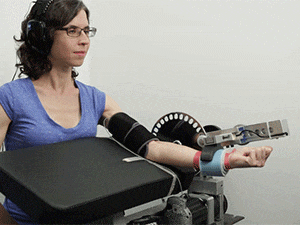Olympic Athletes Are Electrifying Their Brains, and You Can Too
If a brain-stimulation gadget catches on, expect controversy over “brain doping”
![Brett Wingeier [left] and Daniel Chao, cofounders of Halo Neuroscience.](https://spectrum.ieee.org/media-library/brett-wingeier-left-and-daniel-chao-cofounders-of-halo-neuroscience.jpg?id=25581275&width=1200&height=900)
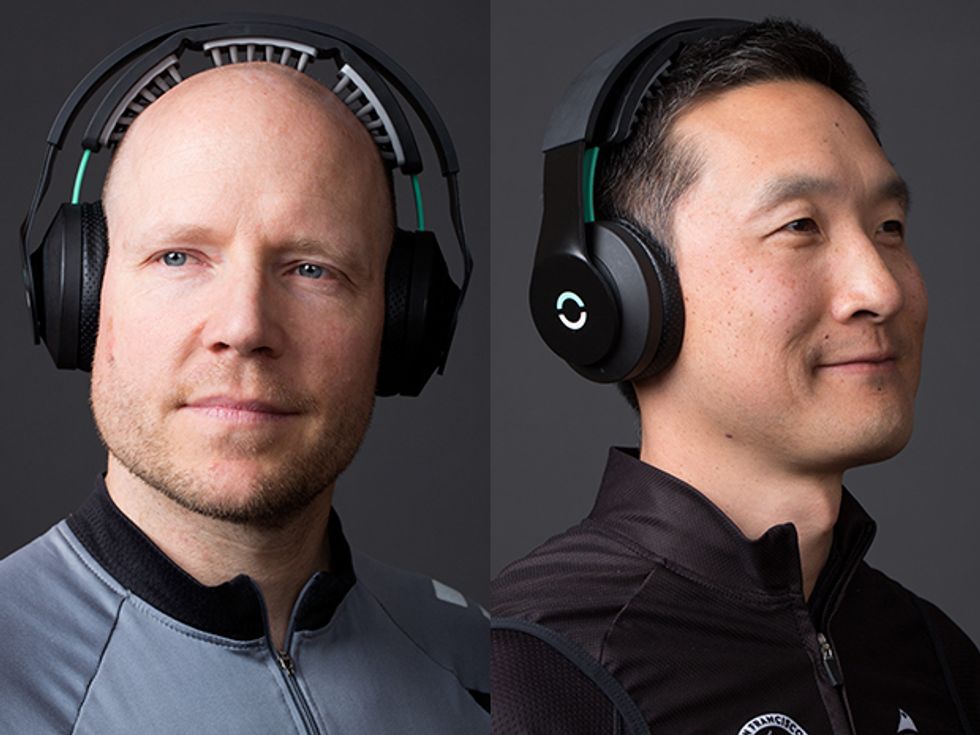
It’s a chilly mid-April morning in the Silicon Valley suburb of Menlo Park. The sun climbs wanly above the horizon while techies start up their Teslas and baristas fire up their espresso machines. I’m far removed from my own morning rituals as I shiver in my workout clothes and stride toward a training facility for elite athletes, my mind a jumble of anticipation and curiosity—with just a twinge of apprehension.
In a few minutes, a technician will place a new gadget called Halo Sport on my head, and the seemingly ordinary headphones will send a trickle of electric current into my brain’s motor cortex. That current will stimulate the neurons that send movement commands to my muscles, supposedly making my brain better at transmitting those commands. According to the San Francisco startup behind this device, Halo Neuroscience, pairing the stimulation with physical training can give an athlete the winning edge. The company says its product can make people faster, stronger, more nimble, or better coordinated
The Halo isn’t on the market yet, but it’s already being used in elite athletics—a world where a vanishingly small improvement in performance can mean the difference between finishing first or 18th. Some Olympic athletes, including sprinters and swimmers, used a premarket version of the Halo to prepare for the Rio games. Professional basketball, baseball, and American football teams are also experimenting with it; the company declines to identify those teams, but one basketball player with the Golden State Warriors tweeted a photo of himself wearing the gear. The first batch for general consumers, scheduled for shipment in October, sold out through preorders priced at US $549 (the retail price will be $749).
Last April, I leapt at a chance to try the Halo myself. I’ve been following the recent emergence of brain-stimulation technologies, watching with fascination as people electrify their heads in medical and recreational pursuits. At the high end, the trend includes surgically implanted deep-brain stimulators for such applications as helping Parkinson’s disease patients move normally. At the low end, an assortment of noninvasive systems that send current through the scalp are easy and cheap enough for DIYers to try at home. We can all be brain hackers now.
Ready to give it a try? If you want to build your own rig, all you need is a 9-volt battery, some simple circuitry, and a couple of sponge electrodes to strap to your scalp. Over the past few years, enthusiastic self-experimenters have taken to Reddit and message boards to trade tips on the most basic technique for brain stimulation, called transcranial direct-current stimulation (tDCS). People also post poignant questions on the forums, asking for advice on using homemade tDCS systems to treat disorders such as depression, anxiety, and chronic pain.
Now entrepreneurs are bringing out commercial devices, hoping to launch an entirely new category of wearables. These startups don’t make overt medical claims, so they’ve avoided the scrutiny of government regulators thus far. (If you’re merely curious about research studies that use tDCS to treat depression, well, they’re happy to provide information, including detailed charts of electrode placements.) But the dozen or so companies in this nascent market are bolder in declaring how their products make healthy people even better. If you believe the websites, these devices improve memory, focus, creativity, and learning. Do you want to be more socially adept? Better at math? Free of your cigarette addiction? You get the idea.
“There are tDCS devices that claim to basically make you a superhero,” says Hannah Maslen, a bioethicist who studies brain-intervention technologies at the University of Oxford’s Centre for Neuroethics. “Some of the claims they make are not even theoretically plausible from a neuroscience point of view.”
While tDCS has been studied extensively in carefully controlled lab conditions, it’s tough to translate sensitive neurotechnology into mass-produced consumer gadgets that work without fail for every user, every time. One of the few independent studies of a commercial brain-stimulation gadget looked at the first product from the London-based startup Foc.us. According to the company’s marketing, the device improved attention and memory to make users better at video games. Yet researchers found exactly the opposite effect: When subjects used the headset while performing a memory task, they actually did worse.
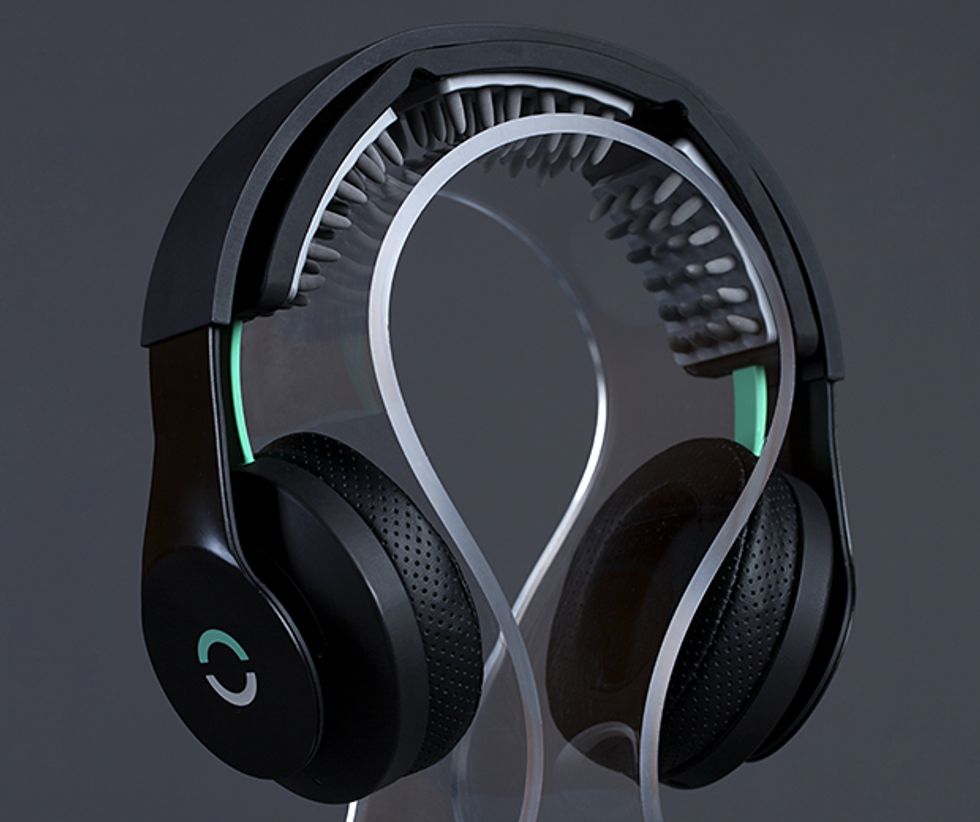
Halo Neuroscience, though, appears more legit. Its cofounders, Daniel Chao and Brett Wingeier, previously worked for NeuroPace, a medical-device company that developed a breakthrough brain implant for epilepsy patients. In conversation, the cofounders seem borderline obsessed with their double-blind, sham-controlled research studies. And they don’t claim their device can do everything. Instead they make only one claim, although it’s a doozy: Halo Sport will help athletes reach new heights of performance.
On my way to the gym for my Halo tryout, my mind buzzes with questions. Is this thing for real? And if it does improve athletic performance, am I witnessing the dawn of brain doping?
Before my first session with the device I get a science briefing from Chao and Wingeier. Befitting a tech startup, Halo’s stylish and airy offices in downtown San Francisco feature stand-up desks in an open layout, a kitchen stocked with pistachios, and cleverly named conference rooms. “Frontal Cortex” is up front near reception; we convened in “Hippocampus,” tucked away toward the back.
Chao, with both a master’s in neuroscience and a medical degree from Stanford University, covers biology, while Wingeier, who has a Ph.D. in biomedical engineering, talks tech. The two left their jobs at NeuroPace in 2013 after U.S. regulators approved the company’s epilepsy implant [pdf]; with that milestone met, they were ready to start a new venture. They didn’t have a precise plan for a product, but they expected it would be another medical device. “We never would have predicted that we’d become a sports-science company,” Chao says.
Here’s what they knew for sure: They wanted to build a company based on tDCS. In this brain-hacking technique, anode and cathode electrodes are placed at certain locations on the scalp to channel current through targeted brain regions. Interest in the method has boomed since 2000, when researchers published the first important studies demonstrating tDCS’s effects on humans. Last year, more than 600 tDCS studies came out. The range of research is staggering, because there are as many potential applications as there are brain regions to target. Investigators are testing tDCS as a treatment for disorders such as addiction, ADHD, Alzheimer’s, aphasia, and autism—and those are just the ones that start with “A.” In another line of inquiry, scientists are trying to figure out if tDCS can influence mental processes such as creativity, morality, learning, and memory.
But while eager scientists are exploring all the things that tDCS might be able to do, a cadre of skeptics argue that many promising results won’t pan out. One prominent voice belongs to Vincent Walsh, a professor of cognitive neuroscience at University College London. He argues that tDCS studies have found only minor effects that he calls “overhyped,” notes that many results have not been replicated, and worries about positive reporting bias: “I don’t think people are reporting all the experiments that don’t work,” he says.
Within this complicated context, the Halo guys took a cautious approach. “In the first year of our operation, we did something very different from other startups: We didn’t think about product,” Chao says. Instead, they made a spreadsheet listing all of the possible brain targets for tDCS and started experimenting, using a crude prototype to run tests on more than 1,500 volunteers. They were looking for stimulation procedures that produced measurable and reliable results.
The standout data came from experiments involving the motor cortex, the brain region that controls voluntary movements. So Chao and Wingeier asked themselves who would be interested in a product that could augment activity in that brain region, and the answer was obvious: athletes. They started working on the Halo, though Chao says he worried that sports teams wouldn’t be ready to embrace brain stimulation: “That’s one of the things that kept me up at night: What would my first meeting be like with the general manager of a baseball team? Would I get laughed out of the office?”
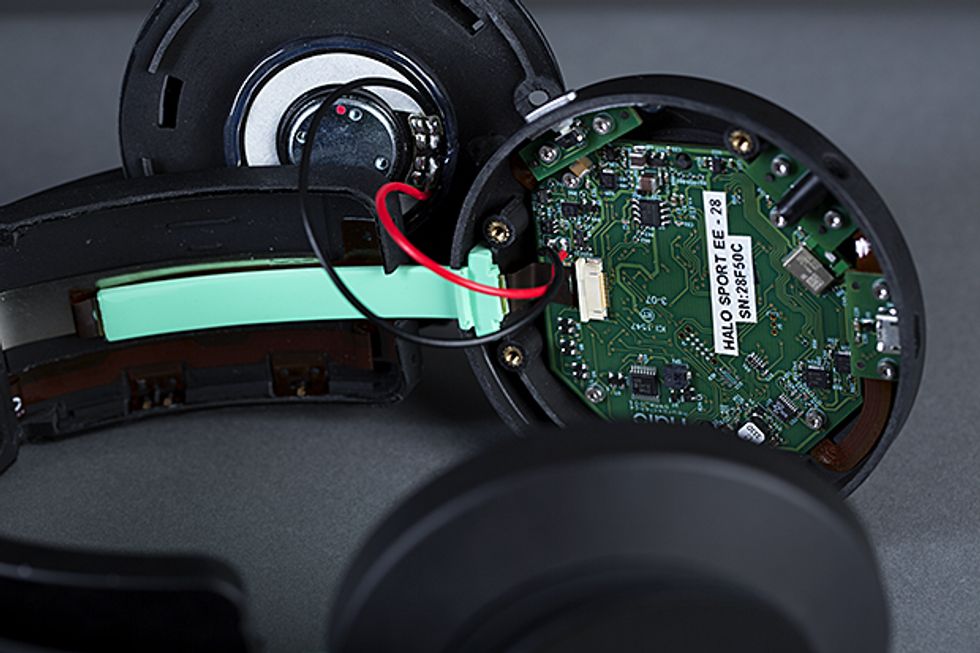
The company’s decision to target the motor cortex was scientifically sound, says leading tDCS expert Marom Bikson, a professor of biomedical engineering at the City College of New York. “It’s pretty unequivocal that when you apply tDCS in a certain way, you change the excitability of the motor cortex,” he says, citing papers that showed clear effects on movement, using metrics such as the speed of finger tapping. He quickly adds, however, that there’s a big difference between finger dexterity and athletic performance. Scientists haven’t looked at outcomes like a sprinter’s speed or a baseball player’s slugging percentage, Bikson says. Companies such as Halo “are often more aggressive in their claims than scientists would be.”
While Bikson reserves judgment on the Halo, the skeptical Walsh is willing to make a prediction. “The hype will make some short-term sales,” he says. “And then a lot of sports institutes will have unused machines in their storerooms.”
Though experts disagree about tDCS’s effectiveness and its exact mechanism, the underlying science isn’t under dispute. The brain is an electric organ, and its 86 billion neurons communicate via pulses of electricity. When a voltage change causes one neuron to “fire,” it releases chemicals that trigger voltage changes in connected neurons. The brain’s every operation, from automatic functions like maintaining a heartbeat to cognitive processes such as making sense of these words you’re reading, can be understood as a flickering pattern of electrical activity, with neurons firing along specific pathways.
When a tDCS gadget sends a trickle of current through someone’s scalp, it makes neurons in the stimulated brain regions more likely to fire. And each time the brain activates a neural pathway, it strengthens the connections between those cells. That’s why repeated stimulation can have long-lasting impact, and also why practicing a new skill improves performance: As French students recite verb conjugations or golfers work on their swings, they’re reinforcing the associated neural pathways.
Halo Sport goes to work on neurons in the motor cortex that send commands through peripheral nerves to the muscles. But athletes can’t just slap on their Halos while sitting on the couch and expect to get better at basketball. Instead, they must pair stimulation with training, wearing the Halo while shooting free throws, for example, to reinforce the proper pathways. “You still have to do the work,” Chao says. The same principle makes the Halo a useful strength-training tool, he argues, because “weight training is as much of a skill as a fine motor task.” An athlete who wears the gear while hoisting barbells will train the motor cortex to better activate the muscle fibers, providing a little more payoff from each rep.
Is sending a trickle of current through the brain safe? As I discovered when describing my reporting project to friends, it sure alarms most people. Some neuroscientists call this reaction the One Flew Over the Cuckoo’s Nest effect, named after the book and movie featuring a psychiatric nurse who wielded electroshock therapy like a weapon, turning rebellious spirits into complacent zombies.
But leaving aside the fact that electroconvulsive therapy (to give that treatment its proper name) is widely regarded as a valid way to shake deeply depressed people out of despondency, there’s the matter of magnitude to consider. In typical ECT, a current of 800 or 900 milliamperes flows through the patient’s head, causing a seizure that serves as a neurological reset. Halo Sport’s current tops out at 2 mA. It’s more like being hooked up to a potato battery than an electroshock machine.
I’m eager to see what a couple of milliamps will do for my motor cortex and biceps when I march through the doors of the Menlo Park training facility on that April morning. As a Guns N’ Roses song echoes through the cavernous space and free weights clang onto the concrete floor, I chat with the Halo employee who brought my gear.
The Halo Sport is meant to be as intuitive and easy to use as an Apple product, with just one button on the headset and all functions controlled by a smartphone app. I can change the stimulation level and duration (20 minutes is standard) and choose between stimulation settings that focus on the upper or lower body. The Halo’s spongy electrode pads are tucked into the band between the earphones; when I settle the device on my head, the electrodes naturally rest over my motor cortex, a strip of brain tissue that arcs from ear to ear. I press the band more firmly to my scalp and check the Halo app. It stubbornly shows a “poor connection” error.
The Halo can’t start until the app detects a steady connection between the electrode pads and my scalp, and that just isn’t happening. When the Halo rep tries it on himself, the app screen immediately lights up green for go. But on me, no amount of wiggling or pressing or repositioning the headphones does the trick. It isn’t my hair, says the dismayed rep; he’s seen the Halo work fine on athletes with Afros, cornrows, and dreadlocks.
It turns out the gear isn’t defective—my head is. When we troubleshoot later at Halo headquarters, Wingeier tells me they’ve tested the device in more than 3,000 sessions, and I’m only the second person who can’t get it working. Wingeier’s phone app displays a diagnostic readout showing my electrical resistance to be off the chart. The Halo is programmed to abort if it encounters resistance above 12,000 ohms, and mine clocks in at 45,000. “Every time something like this happens, we learn a little bit,” Wingeier says wearily.
As he reprograms the device to override the shutoff, Wingeier tactfully refrains from making any jokes about my thick skull. With the settings changed, my Halo works fine during a four-day tryout with intriguing results [see chart in "Buffed-Up Biceps"]. When the device powers up there’s a slight tingle in the skin under the electrode pads, but it fades to nothing after a few seconds. Then I simply feel like I’m wearing good audio headphones: To help athletes forget the technology and focus on the training, the Halo even connects to a phone or iPod to play music.
I may be a highly resistant anomaly, yet my experience points to a difficulty for the company. Can it build a mass-market neuroscience device, I ask the cofounders, that works on all sorts of brains, which are as unique as snowflakes in their anatomical details and workings?
According to Wingeier, the company’s tests have shown that its product “works great for the majority of the people the majority of the time.” Chao also compares their first offering to the Model T, the first mass-produced automobile. As they figure out what individual consumers want and need, they can start making “sports cars and SUVs and compact cars and station wagons,” Chao says. And maybe even some with color schemes besides basic black.
The company validated its standard protocol in several double-blind, sham-controlled trials, which it published as white papers. One study showed that the Halo Sport’s stimulation enabled users to exert more force in a finger-pinching task [pdf], while another demonstrated its positive effect on a fine-motor-skill task [pdf] requiring subjects to strike different keys on a keyboard. Now the team is writing up a study that examined muscle output via a bicep-curl machine, a setup that more closely resembles real-world athletic training. Going forward, Chao says the company will publish its findings in peer-reviewed journals.
These studies measured each test subject’s performance during a single stimulation session, but the Halo Sport is really meant to be part of a long-term training regimen. People who have plenty of room to improve may get immediate results, but serious jocks will likely need a week or two before they notice a difference. And the very best athletes, those who dream of championship rings and gold medals, may see the smallest gains—yet be the most satisfied customers.
Take, for example, the skiers and snowboarders already training for the 2018 Winter Olympics. Troy Taylor, high-performance director for the U.S. team, is responsible for finding equipment that will give them an edge. He says he gets pitched upwards of 500 products each year, including all manner of dubious supplements and wearable gadgets. But when he heard about the Halo, it stuck out as a possible solution to a problem his mountain-bound athletes face.
When soccer or basketball players train, Taylor says, they might spend 70 or 80 percent of their time practicing their sport. “But in skiing and snowboarding, our athletes spend maybe 5 to 10 percent of their time actually sliding over snow,” he says. Much of the rest of the time they’re cooling their heels on chairlifts. A technology that could speed up an athlete’s ability to learn, maximizing the impact of those precious downhill runs, interested him greatly.
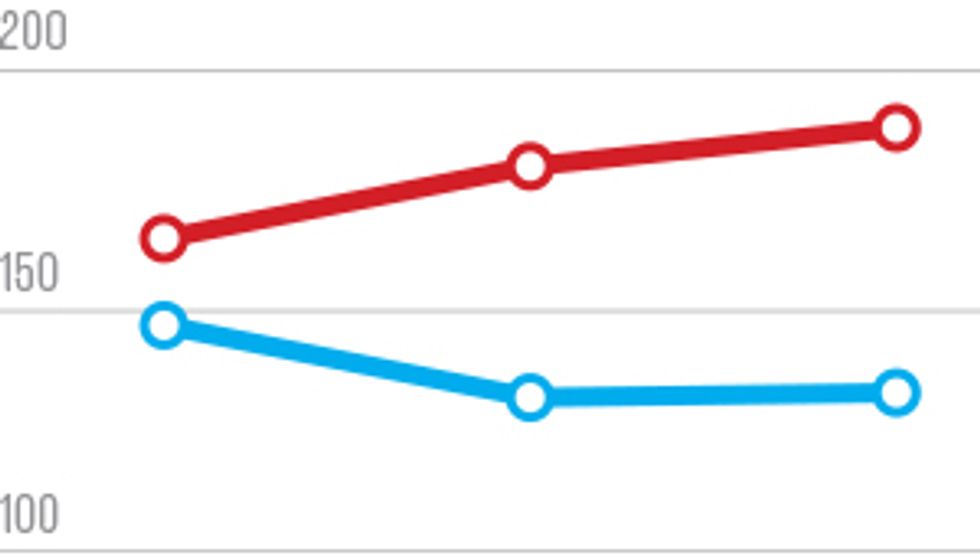
Taylor set out to determine whether the Halo worked as advertised and could be a useful training tool. So in late 2015, he began his own research trial with a group of ski jumpers in the team gym. While receiving either real or sham stimulation, the athletes practiced launching themselves upward from a slippery board that rested on rollers. “I can barely stand on this thing,” Taylor says. “But an elite athlete can stand on it and then jump.” A force plate beneath the board measured the power of the skiers’ jumps as they learned this skill over the course of three weeks. The results: The sham group improved by 18 percent, while the real stimulation group improved by 31 percent.
The jumpers all had instant feedback on each attempt, helping them continually fine-tune how they controlled their muscles. With the Halo’s neural stimulation reinforcing those control patterns, Taylor says, the skiers sped up their normal learning process. He was sold. The key to making today’s extraordinary athletes even better doesn’t lie in upgrading their physiques, Taylor says, but rather in upgrading their brains. “We’re excited, and we think it may provide us with a competitive advantage leading into the 2018 Olympics,” he says.
But such initial successes raise a question: Does brain hacking constitute brain doping? Taylor certainly doesn’t think so. He says any performance booster that doesn’t endanger the athlete’s health and hasn’t been banned by the authorities is fair game. “It’s my job to push the boundaries,” he declares.
The World Anti-Doping Agency (WADA) compiles the list of performance-enhancing substances and treatments forbidden by the International Olympic Committee. Olivier Rabin, WADA’s science director, says his team is “very actively monitoring” brain-stimulation technologies, and recently discussed whether tDCS and similar techniques warranted inclusion on the prohibited list. Their verdict: It’s not yet time to make that decision. “At the moment, our experts consider that there is a lack of objective information about these technologies,” he says.
First, Rabin says, he’ll need to see scientific proof that tDCS does enhance athletic performance. And he’s not holding his breath. In his 14 years on the job, he’s seen plenty of hyped technologies that don’t pan out, he says. But if tDCS’s benefits are verified, WADA will judge the technology on two other criteria: whether it risks the health of the athlete, and whether it violates “the spirit of sport.” A positive finding in either category is grounds for a ban.
Both of these criteria pose knotty problems. Thousands of clinical trials have proven tDCS safe in the short term—the worst side effects have been skin irritation under the electrodes and the occasional headache. But the technology is so new that long-term safety studies simply haven’t been done yet. As for the other criterion, good luck getting a clear definition of “the spirit of sport.” WADA’s official World Anti-Doping Code defines the term with a long list of principles meant to sum up “the essence of Olympism, the pursuit of human excellence through the dedicated perfection of each person’s natural talents.” If, in the end, the authorities decide tDCS should be banned, they’ll still have a conundrum: There’s no way to test for it.
While the authorities dither, Halo will do its best to slip into the mainstream. And athletes are just the first customers targeted by this ambitious company. In South Carolina, a neurologist is currently testing the Halo with stroke patients to see if stimulating the motor cortex speeds up rehab. Chao envisions a whole range of Halo products offering consumers different kinds of mental boosts. “What if you want to learn Chinese and we stimulate the language center?” he says. “What if we stimulate the memory center and pair that with brain-training games?”
If sports heroes embrace a technology that makes them slightly better versions of themselves, people watching from the stands may well become eager to optimize themselves too. In this new society of swifter, stronger, smarter human beings, I’ll be the old-fashioned person wandering around with a weirdly thick head.
This article appears in the September 2016 print issue as “A New Kind of Juice.”
Seeking Anecdotal Evidence

Olympians and other elite athletes are always in search of an edge to sharpen their game. That’s true of IEEE Spectrum Editor Eliza Strickland as well. When Strickland, whose beat is biomedical technologies, decided to cover a hot new brain-stimulation gadget that allegedly boosts athletic performance, she couldn’t resist trying it out herself.
Tech-savvy baseball and basketball players, hurdlers, swimmers, and high divers are all testing out the Halo Sport. Although Strickland cycles and runs, she wasn’t up for a crash course in high diving. So she opted for basic strength training, using the Halo to stimulate her brain while lifting weights at a gym over the course of four days. Her goal: to see if the thing could really make her measurably stronger in such a short period.
To gauge her results, Strickland used a custom-built bicep-curl machine at the headquarters of the startup Halo Neuroscience. She did a three-set workout with the machine on her first day, without receiving the neural stimulation, using the resulting data as her baseline. Four days later, she repeated the exercise while receiving stimulation—and found that her performance did indeed improve.
This trial was hardly a rigorous experiment, of course. Training over the course of four days would likely improve performance anyway, and the placebo effect can play a significant role. But Strickland says such immediate results may be enough to impress consumers. At the steep price of US $749, the Halo Sport had better deliver, she says. “People who are willing to pay that kind of cash for a sports gadget will want to see real performance gains,” she says, “and may not care how the magic happens.”
